Modal
Modals focus the user’s attention exclusively on one task or piece of information via a window that sits on top of the page content.
Live demo
This live demo contains only a preview of functionality and styles available for this component. View the full demo on Storybook for additional information such as its version, controls, and API documentation.
Accessibility testing statusFor every latest release, Carbon runs tests on all components to meet the accessibility requirements. These different statuses report the work that Carbon has done in the back end. These tests appear only when the components are stable.
For every latest release, Carbon runs tests on all components to meet the accessibility requirements. These different statuses report the work that Carbon has done in the back end. These tests appear only when the components are stable.
Overview
Modals are a variant of dialog used to present critical information or request user input needed to complete a user’s workflow. Modals interrupt a user’s workflow by design. When active, a user is blocked from the on-page content and cannot return to their previous workflow until the modal task is completed or the user dismisses the modal. While effective when used correctly, modals should be used sparingly to limit disruption to the user.
Modal dialogs are commonly used for short and non-frequent tasks, such as editing or management tasks. If a user needs to repeatably preform a task, consider making the task do-able from the main page.
When to use
Require an immediate response from the user
Use a dialog to request information that is preventing the system from continuing a user-initiated process.
Notify the user of urgent information
Use a modal dialog to notify the user of urgent information concerning their current work. Modal dialogs are commonly used to report system errors or convey a consequence of a user’s action.
Confirm a user decision
Use a modal dialog to confirm user decisions. Clearly describe the action being confirmed and explain any potential consequences that it may cause. Both the title and the button should reflect the action that will occur. If the action is destructive or irreversible then use a transactional danger modal.
Variants
| Variant | Usage |
|---|---|
| Passive | Presents information the user needs to be aware of concerning their current workflow. Contains no actions for the user to take. |
| Transactional | Requires an action to be taken in order for the modal to be completed and closed. Contains a cancel and primary action buttons. |
| Danger | A specific variant of transactional modal used for destructive or irreversible actions. |
| Acknowledgment | System requires an acknowledgement of the information from the user. Contains only a single button, commonly “OK”. |
| Progress | Requires several steps to be completed before it can be closed. Contains a cancel, previous, and next/completion buttons. |
Formatting
Anatomy
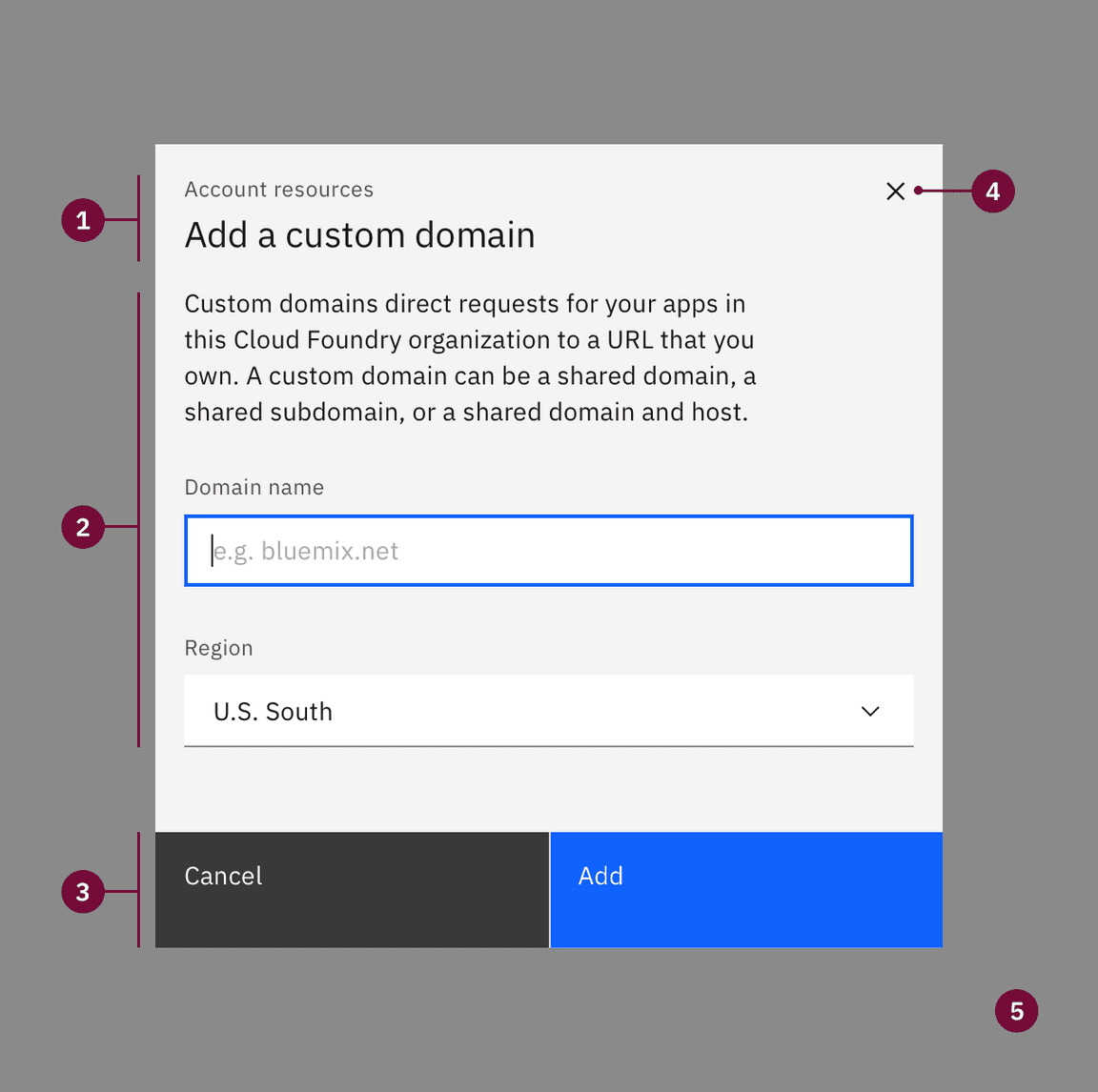
The modal is composed of three distinct zones: A header, the body, and a footer. Components (eg. data table, form, progress indicator) can occupy the full width of the modal.
Header: Includes a title, optional label, and the close icon.
Body: Contains the information and/or controls needed to complete the modal’s task. It can include message text and components.
Footer: Contains the main actions needed to complete or cancel the dialog task. Button groupings change based on modal variant.
x: The close
xicon will close the dialog without submitting any data.Overlay: Screen overlay that obscures the on-page content.
Sizing
There are four responsive modal sizes: extra small, small, medium, and large. Choose a size that works best for the amount of modal content you have. Modals with short messages should use a extra small or small modal to avoid long single lines; for complex components, like data table the default or large modal will be more accommodating.
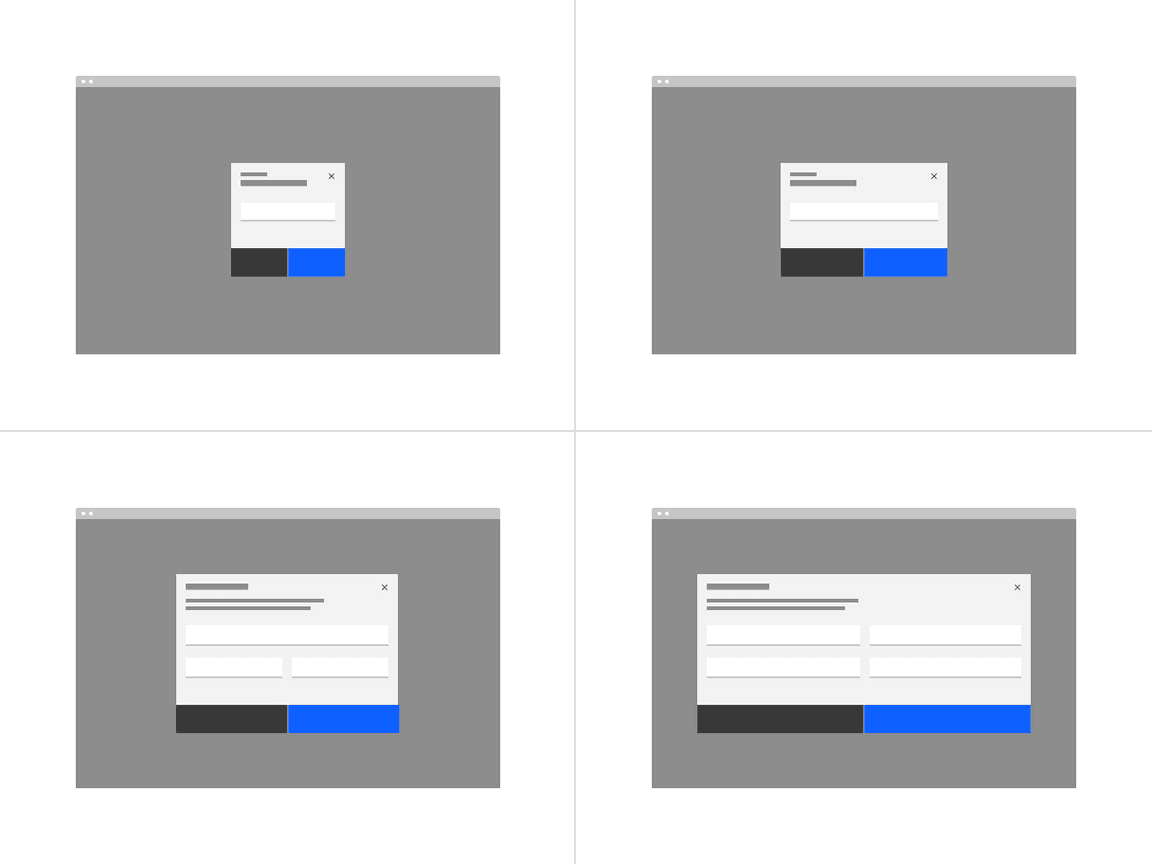
Max heights
Each modal size has a max height in order to maintain a proper window ratio. If your modal has too much scrolling due to a max height consider using the next modal size up. If the large modal height is still not enough space then this is an indicator that a full page may be needed instead.
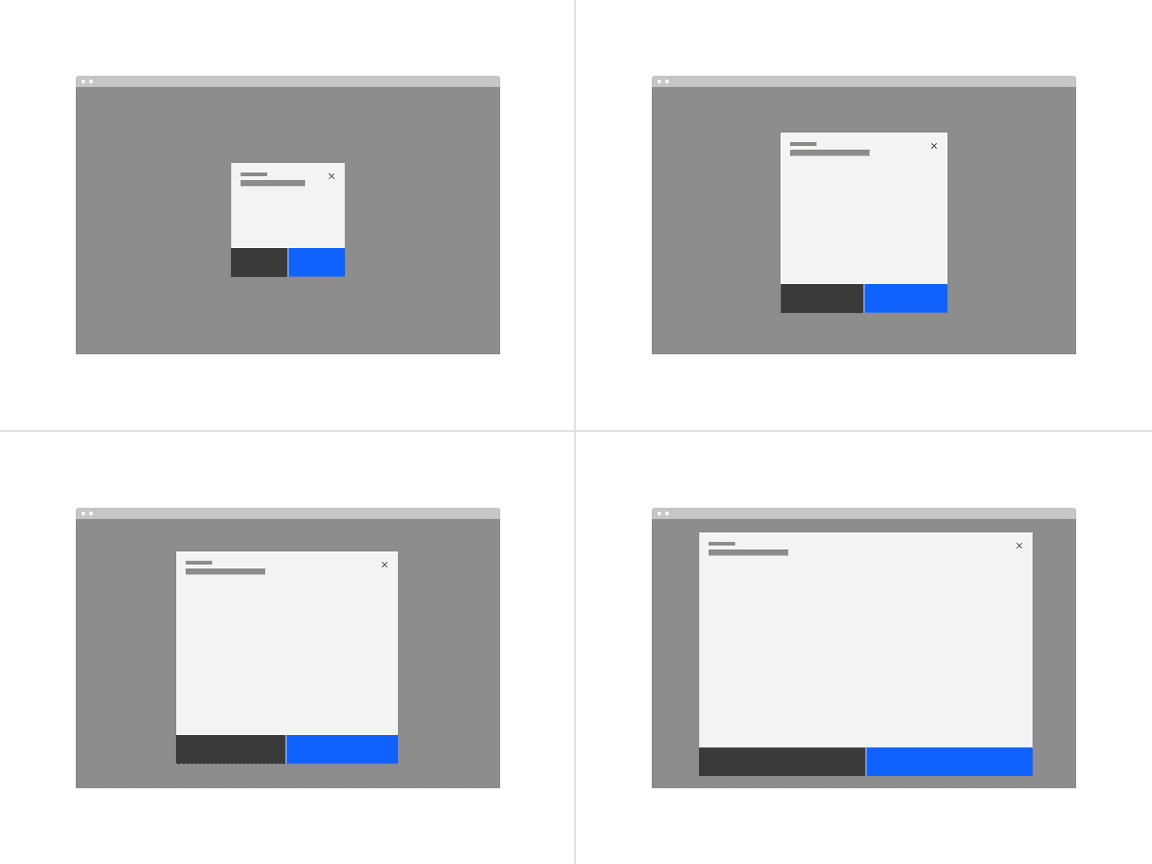
Alignment
In the modal, at larger breakpoints, body copy, including titles, have a 20% margin-right. However, form inputs and other components expand the entire width of a modal window.
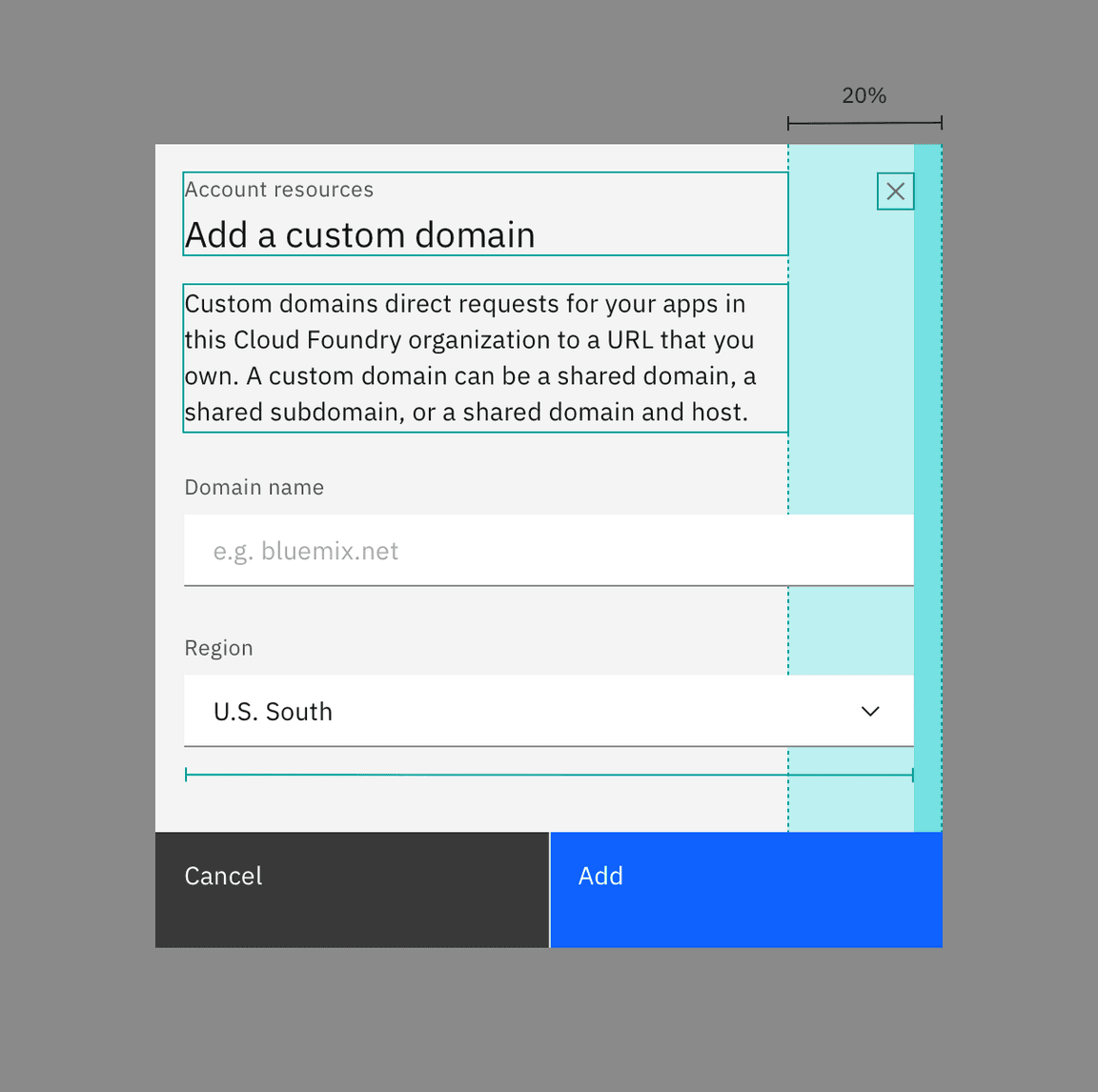
Full-width content
Certain components, such as a structure list or table, can expand into the margins of the modal and align flush to the container edges. These components typically have border dividers or containers extending beyond the text or icon. Labels or text of any kind should never be in the modal margins.
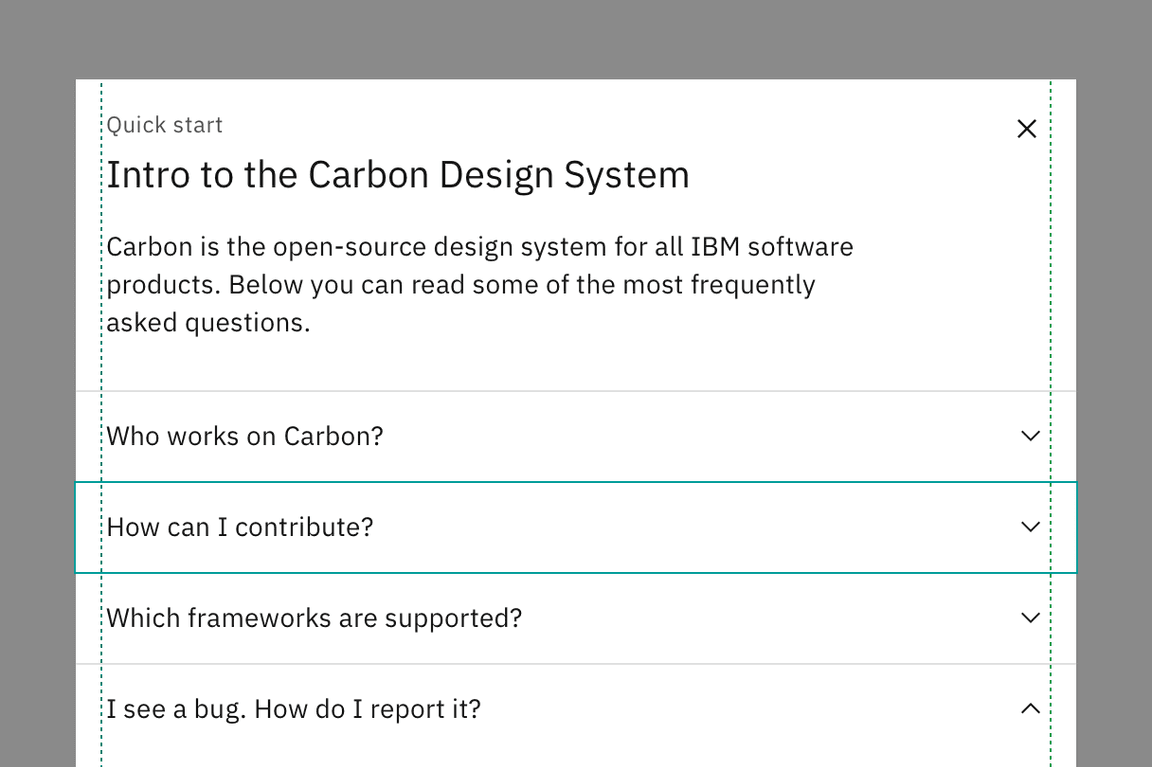
Content
Main elements
Title
- The title should be brief, using a verb plus noun combination that clearly describes the dialog’s task or purpose.
- You can use an optional label above the title to set the context for the information in the dialog.
Body copy
- A modal should include only content relevant to completing the current task.
- Text should only be 80% of the modal’s width and components can span 100% of the width.
Footer
- Use descriptive words for the actions such as Add, Delete, and Save. Avoid vague words like Done or OK. For a list of approved action labels, see Carbon’s content guidelines.
- If you need to include a “docs” or other non-primary action, include it as a link in the modal’s body.
Overflow content
When the modal content is longer than the modal height then the body section should scroll vertically with the header and footer remaining fixed in place. The content should visibly fade at the end of the modal body area to indicate there is additional content out of view.
Modal content should never scroll horizontally; instead, use a larger size modal.
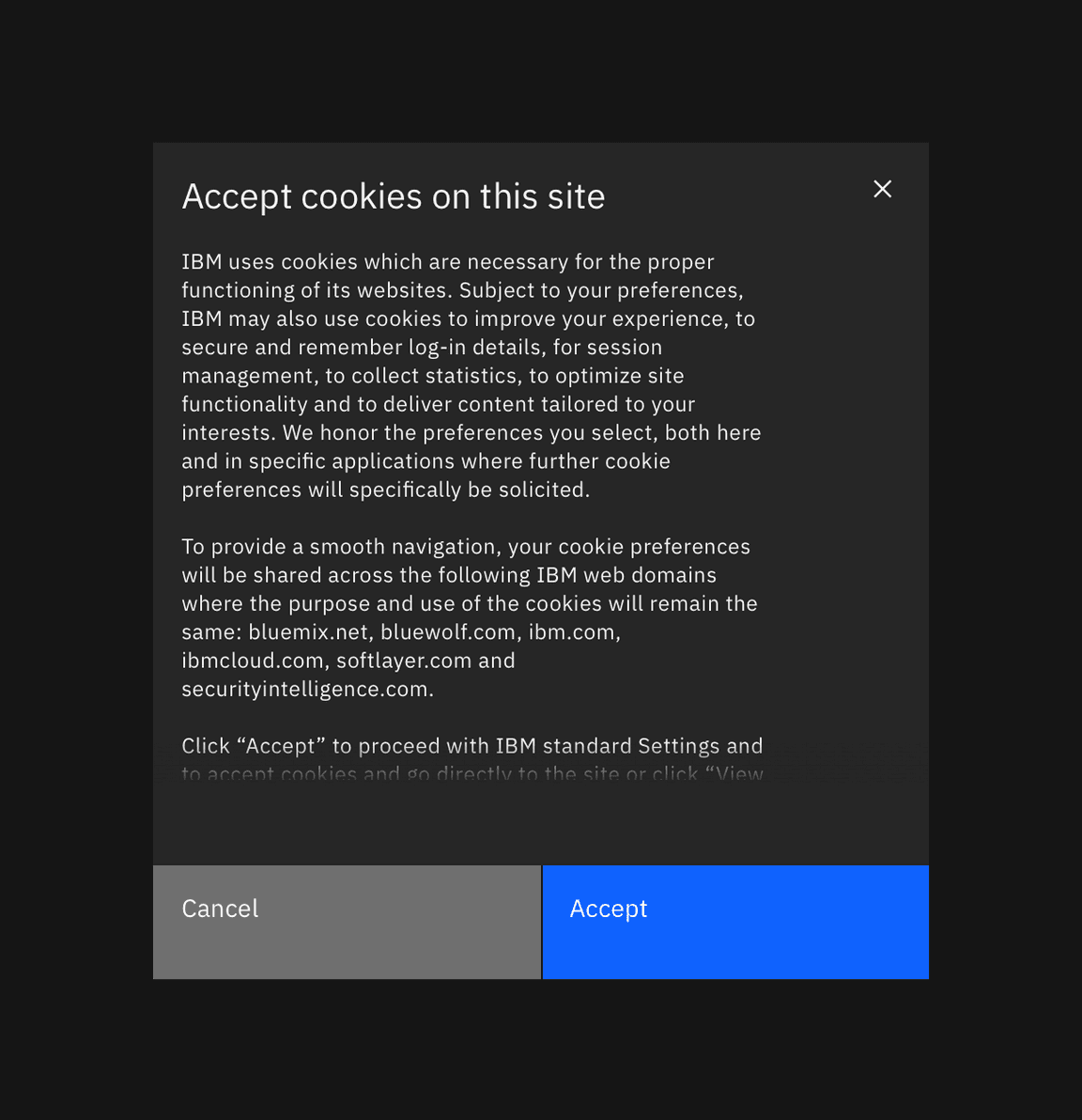
Title as message
For short, direct messages the title can include the whole message to add visual clarity to an otherwise repetitive title and body message. When using this style, no other body copy may be included.
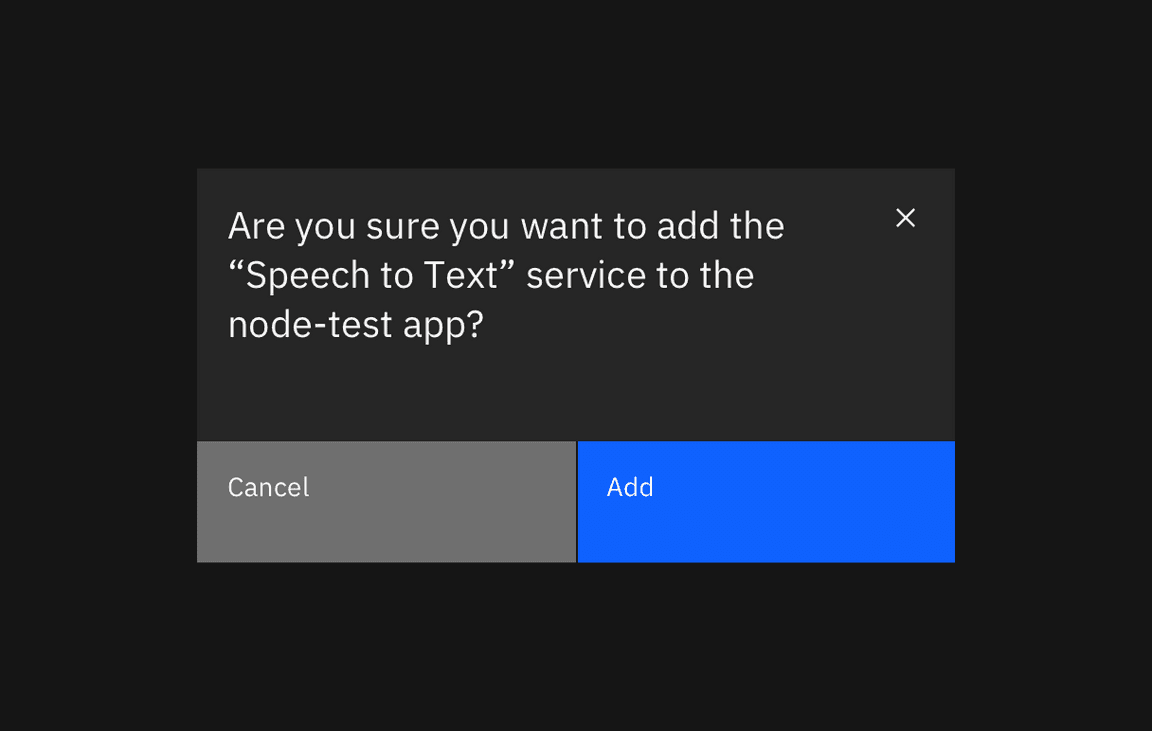
Further guidance
For further content guidance, see Carbon’s content guidelines.
Universal behaviors
Trigger
Modals are triggered as a result of a user’s action and are not system
generated. Common components that can trigger a modal include, button, link, or
icon. On a keyboard, selecting Enter or Space should launch the modal.
Focus
Once the modal is open, set the initial focus to the first location that accepts user input. For example, if the modal contains a form then the focus should automatically be set to the first field when opened. If it is a transactional modal without form inputs in the body section then the first focus should be on the primary button.
Focus should then remain trapped in the dialog until it is closed. When
navigating by keyboard, Tab and Shift-Tab do not move the focus outside of
the modal.
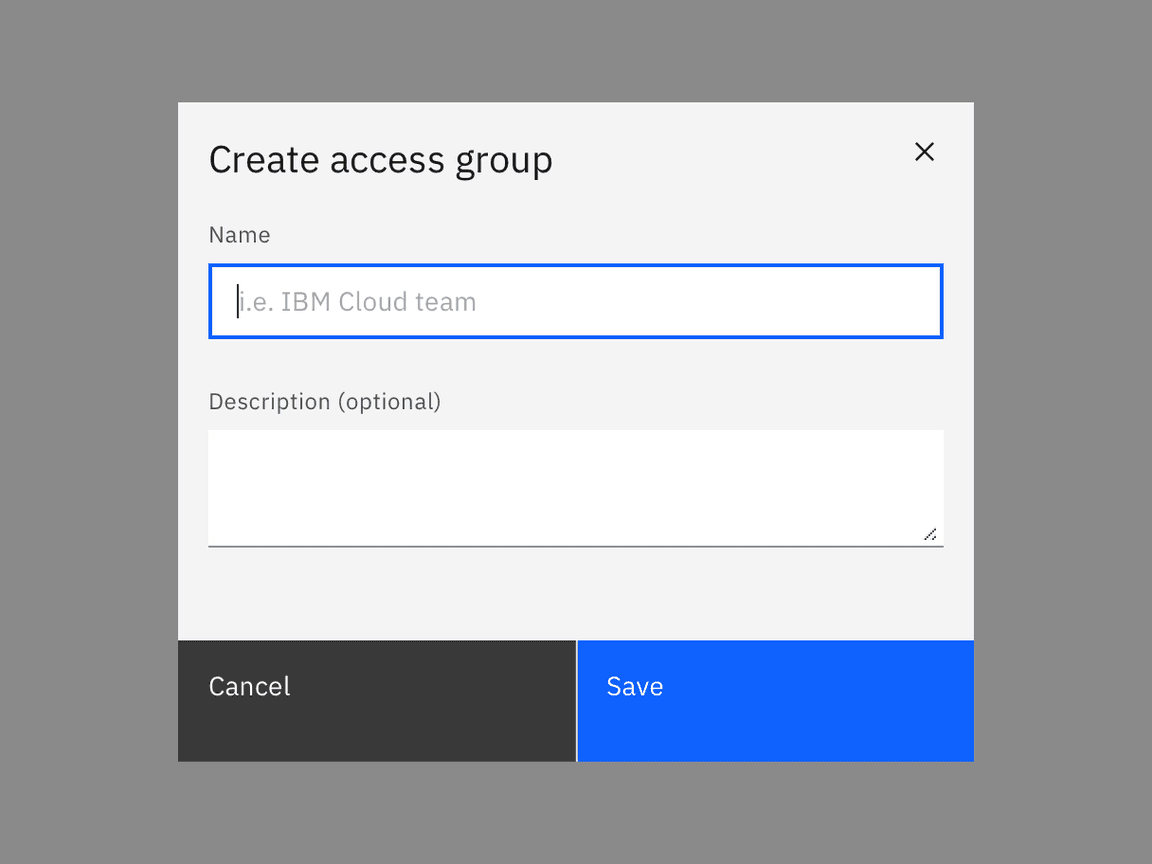
Loading
The task completion action should take place immediately. If a longer loading period is needed then a loading spinner and overlay should appear on top of the modal body area with content disabled. The primary action button should be disabled while loading is in progress.
If a quick loading period is needed then use a inline loading behavior on the primary button to indicate the data is being processed.

Validation
Validate a user’s entries before the modal is closed. If any entry is invalid then the modal should remain open with the entry marked in an error state and include an inline error message. The message should inform the user what has happened and provide guidance on next steps or possible resolutions. Effective and immediate error messaging can help the user to understand the problem and how to fix it.
When possible, we recommend validating the user’s data before submission. This kind of inline validation (aka client-side validation) should happen as soon as the field loses focus. This will help easily identify the elements that need to be corrected. On field error messages should disappear when the form criteria is met. If the data was not able to be submitted due to server-side issues then an inline notification should appear.
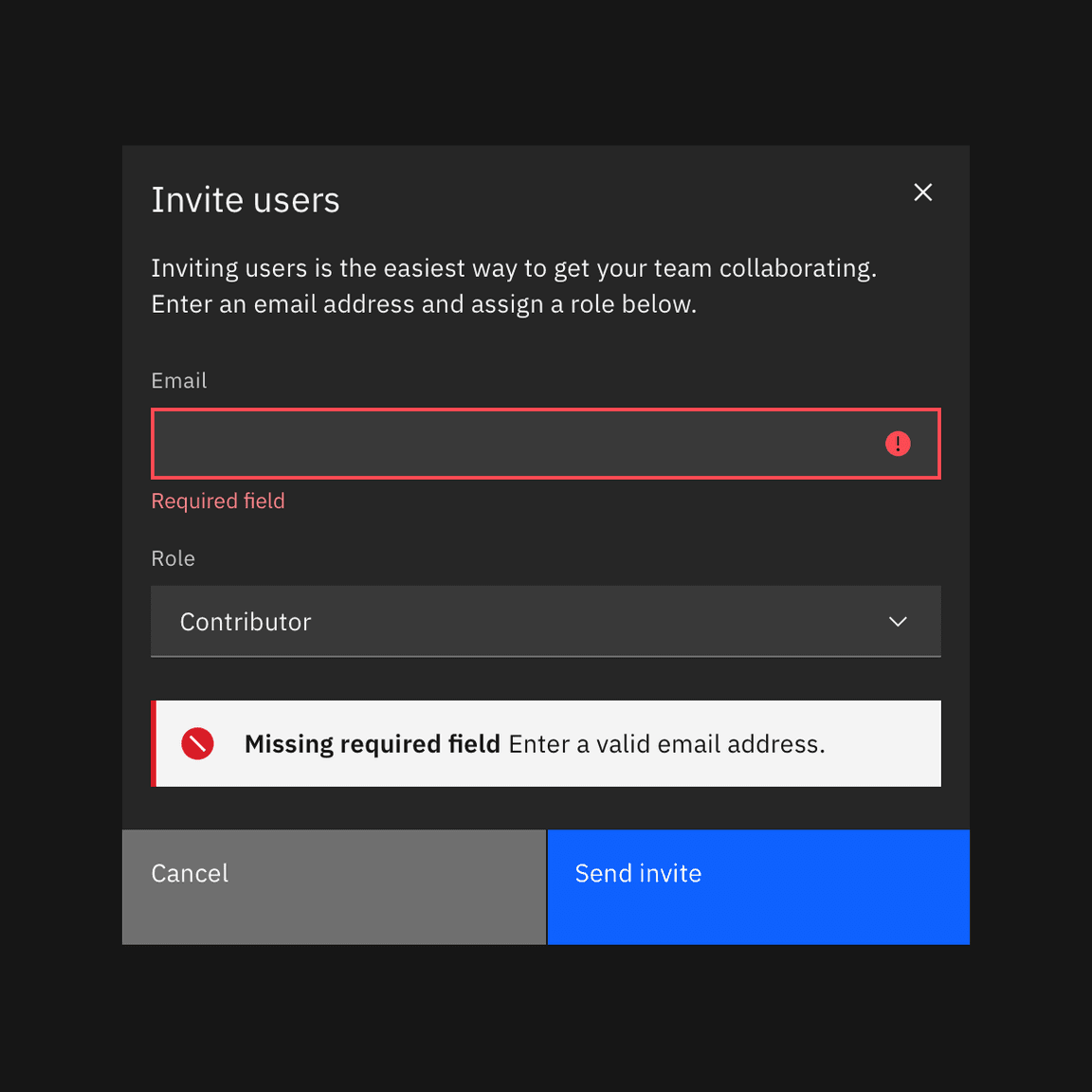
Modal variants
Passive modal
Passive modals presents information the user needs to be aware of concerning their current workflow. It contains no actions for the user to take and should not include any data that needs to be submitted. They serve as a type of notification alerting the user to urgent information such as reporting system errors or conveying a consequence of a user’s action.
Dismissing a passive modal
Passive modals are persistent until dismissed in one of the following ways.
- x: Clicking the close
xicon in the upper right will close the modal without submitting any data and return the user to its previous context. - Click elsewhere: Clicking outside the passive modal area will automatically close the modal.
- Esc: Press
ESCon the keyboard
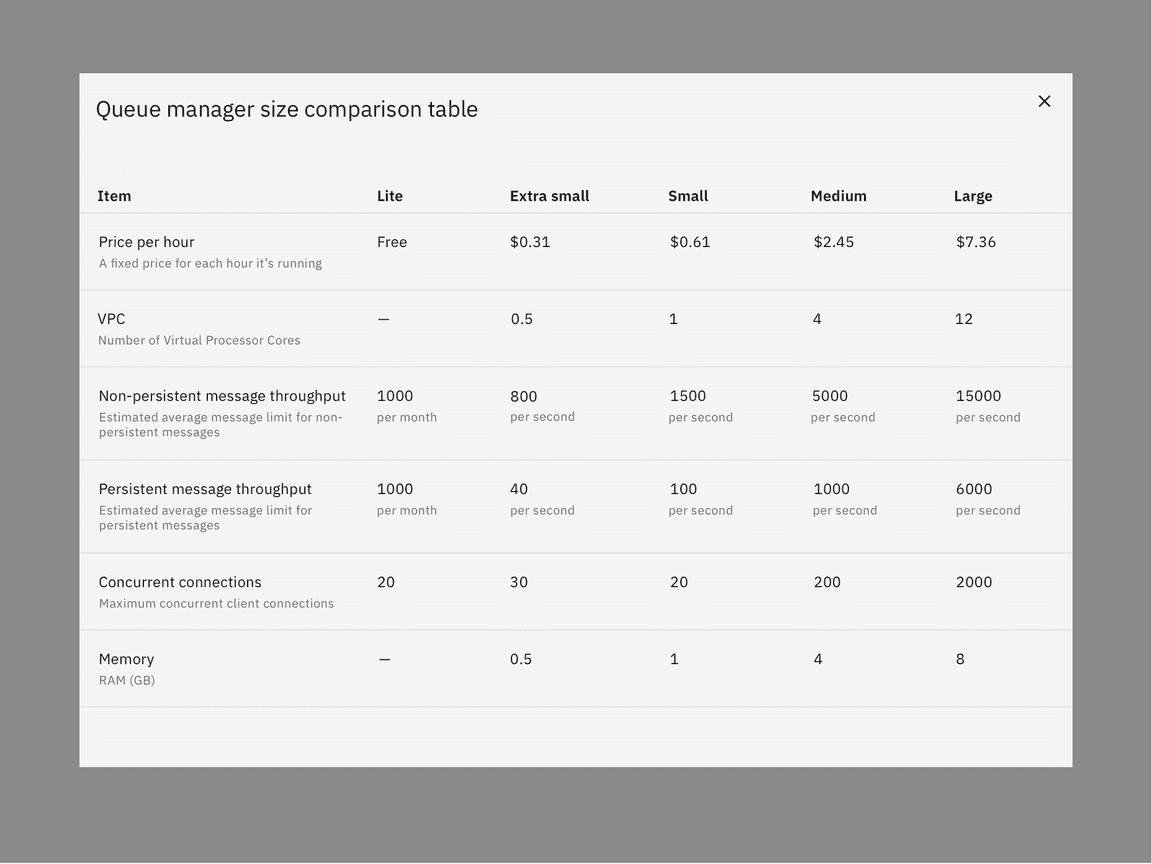
Transactional modal
Transactional modals are used to validate user decisions or to gain secondary confirmation from the user. Transactional modals require an action to be taken in order for the modal to be completed and closed. It contains a cancel and primary action buttons.
Dismissing a transactional modal
Transactional modals are persistent until dismissed in one of the following ways.
- Task completion: clicking the primary action will complete the task and automatically close the modal.
- Cancel button: clicking the cancel button will close the modal and return the user to its previous context. Cancel undoes all applied changes.
- x: Clicking the close
xicon in the upper right will close the modal without submitting any data and return the user to its previous context. - Esc: Press
ESCon the keyboard.
Two buttons
When using two buttons, the secondary button is on the left and the primary button is placed on the right. Each button spans 50% of the dialog and are full bleed to the edge.
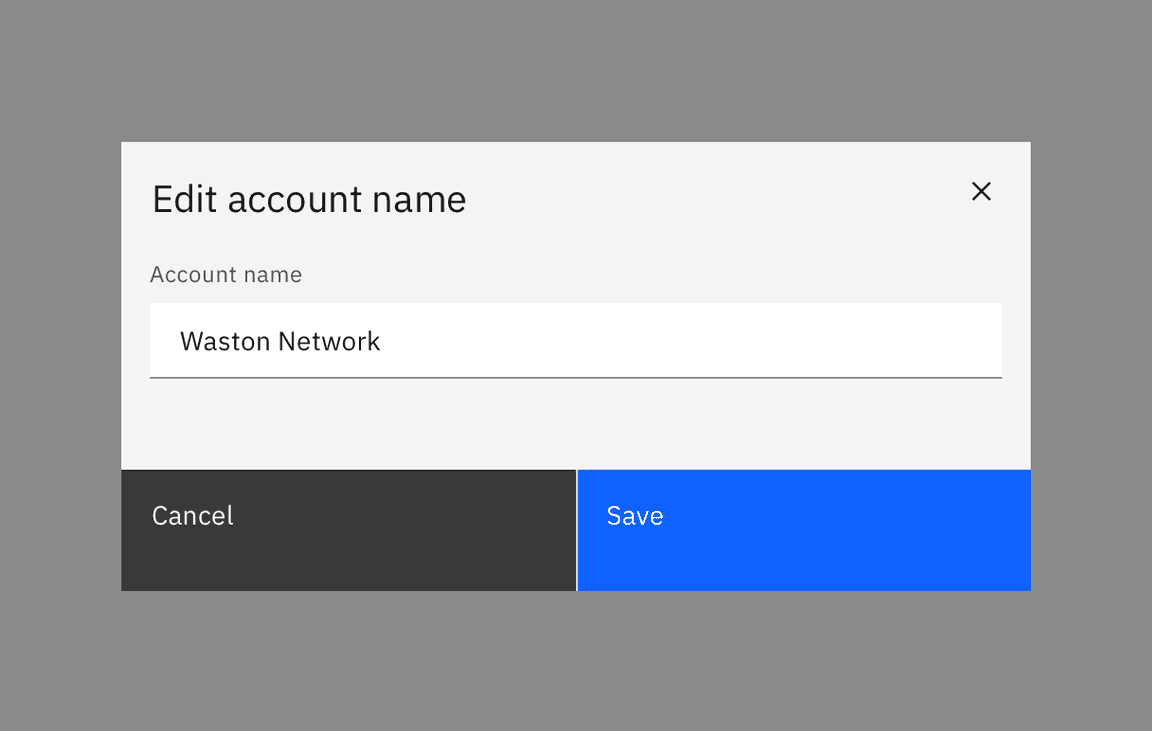
Three buttons
In the rare case where three buttons are needed, each is 25% of the dialog width and aligned to the right side of the modal. Only the outmost right button is allowed to be a primary button with the other two being secondary buttons. If all three actions have the same weight then all three should be secondary buttons.
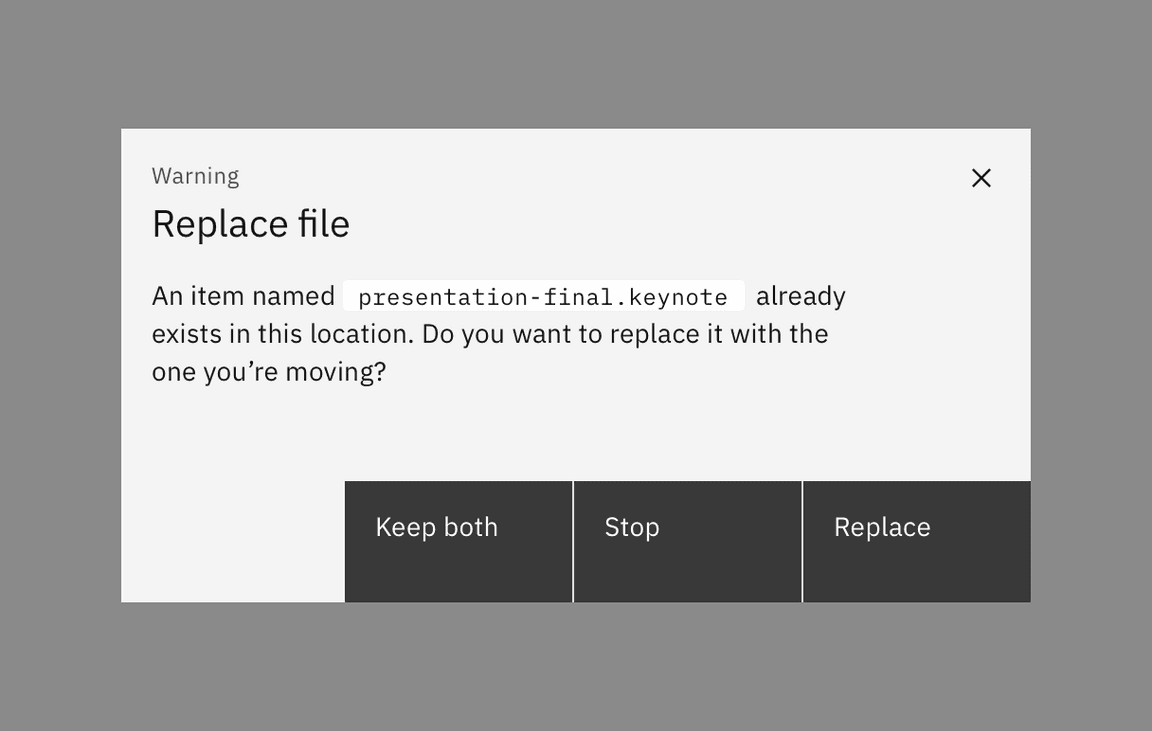
Danger modal
Danger modal is a specific kind of transactional modal used for destructive or irreversible actions. In danger modal, the primary button is replaced by a danger button. They are commonly used in high impact moments as a confirmation for an action that would result in a significant data loss if done accidentally.
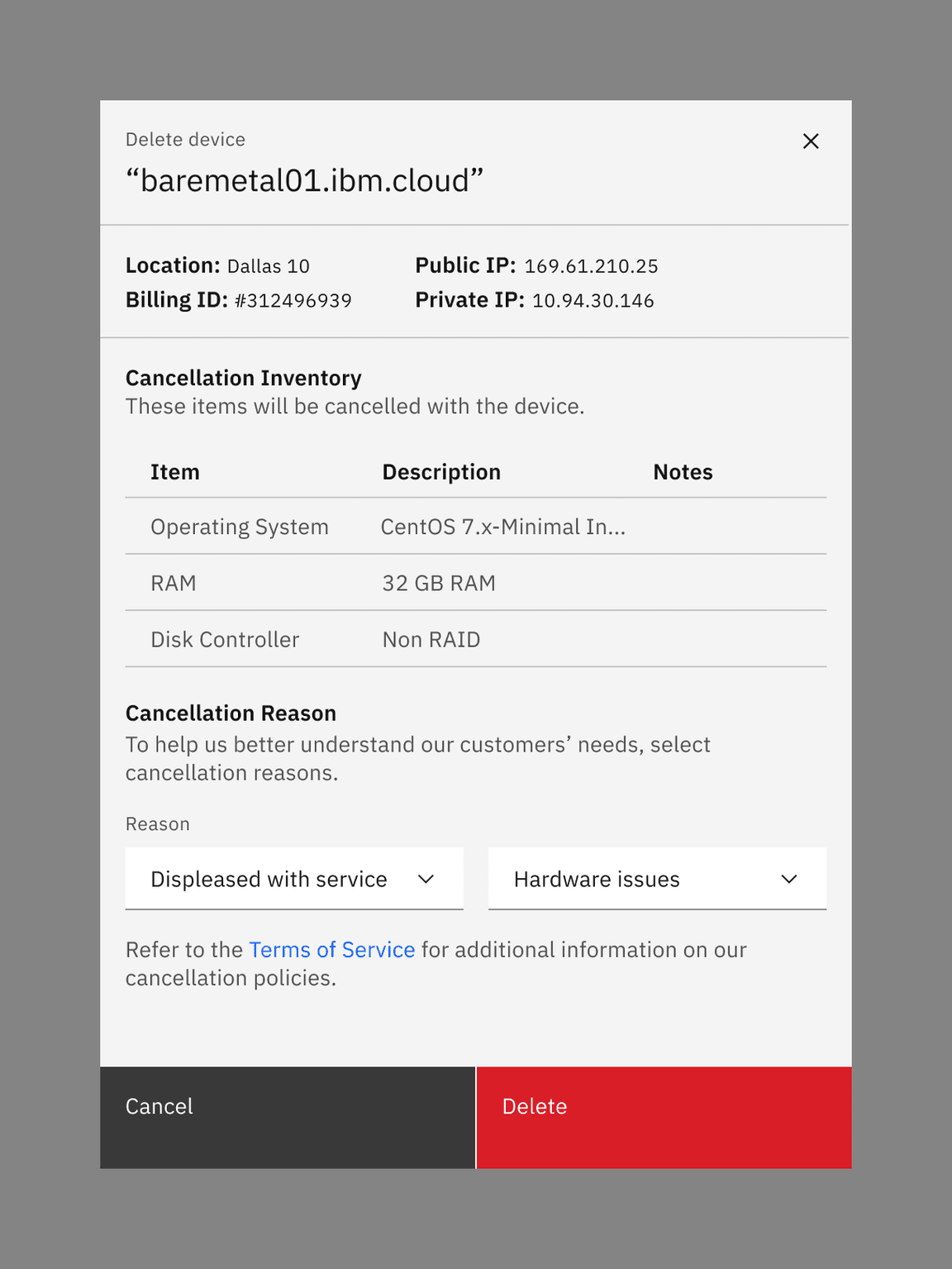
Acknowledgment modal
Acknowledgment modals are used when the system requires the user to acknowledge the presented information. It contains only a single button, commonly “OK”. Acknowledgment is confirmed when the user clicks the primary button.
Dismissing an acknowledgment modal
Acknowledgment modals are persistent until dismissed in one of the following ways.
- Task completion: Clicking the primary action will complete the task and automatically close the modal.
- x: Clicking the close
xicon in the upper right will close the modal without submitting the user’s acknowledgement and return the user to the previous context. - Esc: Press
ESCon the keyboard.
Single button
Single buttons are placed on the right side, span 50% of the modal, and bleed to the edge. In most scenarios, a primary button is used when one button is needed.
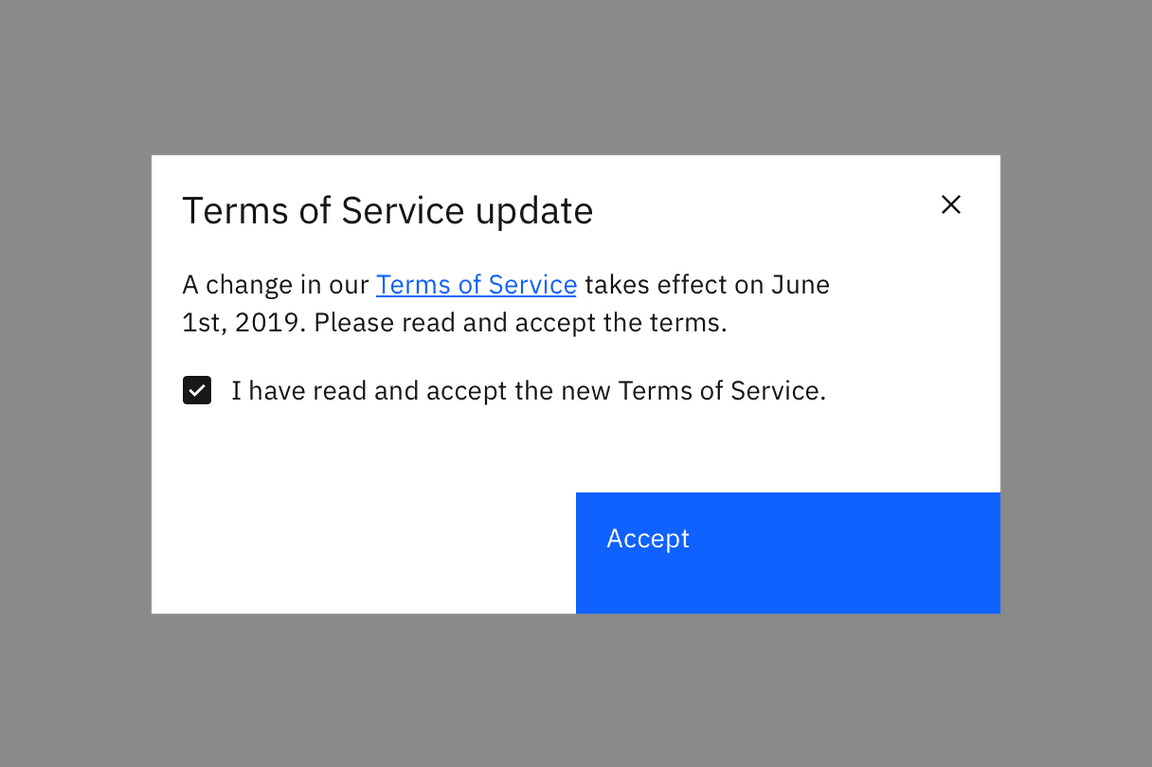
Progress modal
For longer tasks, use a progress modal to give the user a sense of completion and orientation within the focused flow. For complex flows with complex choices, consider using a full page instead of a modal. A progress modal is not a solution for excess modal content. It should only be used to present information in more consumable and focused chunks.
Dismissing a progress modal
Transactional modals are persistent until dismissed in one of the following ways.
- Task completion: Clicking the primary action will complete the task and automatically close the modal.
- Cancel button: Clicking the Cancel button will close the modal and return the user to its previous context. Cancel undoes all applied changes.
- x: Clicking the close
xicon in the upper right will close the modal without submitting any data and return the user to its previous context. - Esc: Press
ESCon the keyboard.
Button group
There are three buttons in the progress modal footer: Cancel, Previous, Next. Each button’s width is 25% of the dialog window and are full bleed. Previous and Next are grouped together and placed on the right half of the dialog, with Previous as a secondary button and Next as a primary button. In the last step of the sequence, the Next button label should change to reflect the final action. The Cancel button is aligned to left side of the dialog and uses a ghost button.
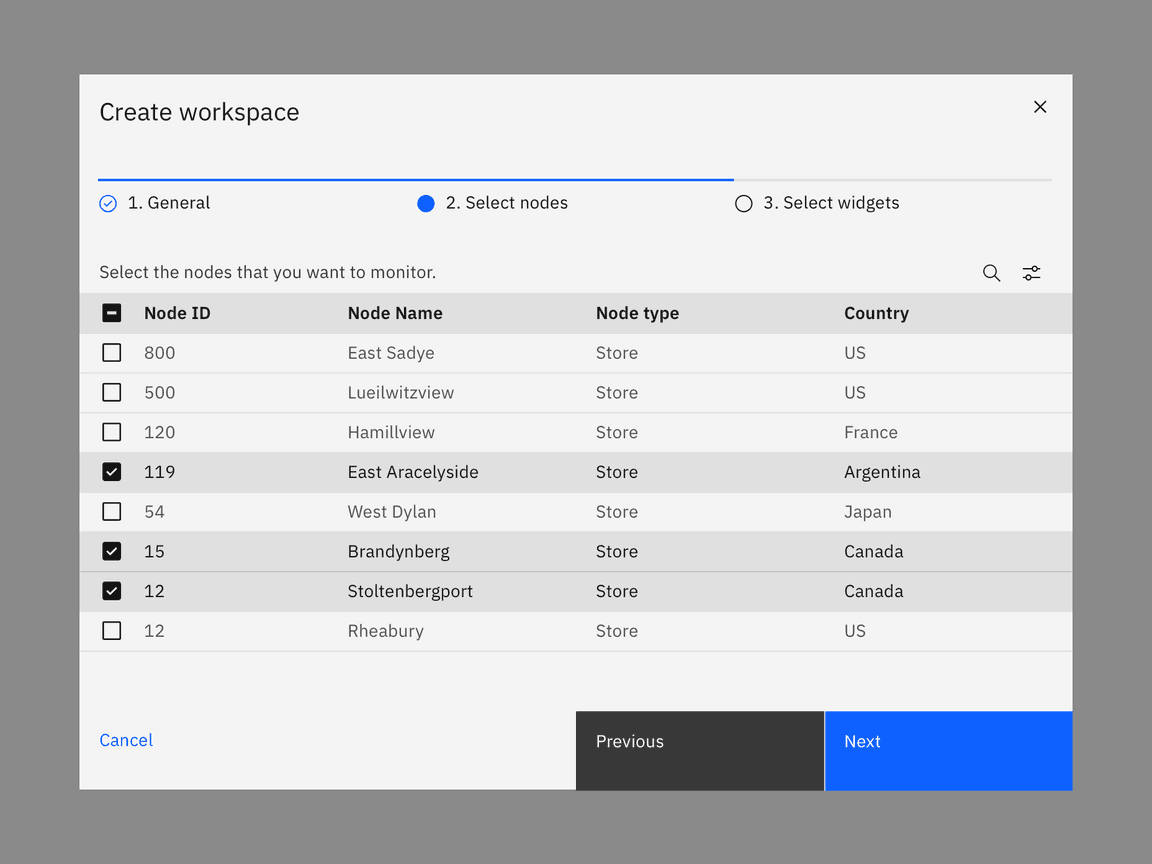
Related
Modal vs. notification
Modals are highly disruptive and block tasks until dismissed by the user. A modal should only be used as a form of notification if it provides the user with critical information immediately related to their task. For non-critical messaging, consider using a toast or inline notification instead of a modal. Toast and inline notifications provide users with non-disruptive feedback or the status of an action without breaking their workflow.
Components
Patterns
Feedback
Help us improve this component by providing feedback, asking questions, and leaving any other comments on GitHub.